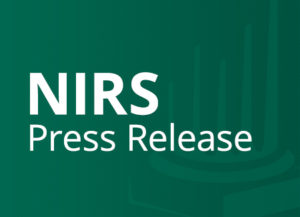Leading Culprit is Funding Volatility, Not Pension Costs; Opportunities Exist to Reverse Pension Coverage Decline
March 1, 2011 – Private sector companies have trended away from offering pensions because of an onerous regulatory environment.
Download Research Brief here.
Since the 1970s, laws and regulations have created funding volatility for companies sponsoring pensions, rather than facilitating predictable costs that enable companies to effectively manage cash flow. These findings are contained in a new research brief, “Who Killed the Private Sector DB Plan?” released today by the National Institute on Retirement Security.
A wide body of research has focused on the numbers of companies trending away from pensions, yet substantially less attention has focused on the specific reasons why. In 2005 only 33% of private sector employees with workplace retirement plans had pensions, yet coverage was at 85% in 1975. This research brief examines the root causes behind the trend and finds that:
- Pensions are effective for employers and employees. Pensions offer employers a cost-efficient, useful workforce management tool for employee recruitment and retention. For employees, pensions help ensure adequate and predictable income in retirement.
- Despite the advantages of pensions, private sector employers have been closing and freezing their pensions due to onerous laws and regulations enacted since the 1970s, including the Pension Protection Act of 2006. These rules created complicated funding rules, and increased contribution volatility when employers need steady, easy-to-estimate costs from year to year.
- Companies may not understand that employees value pension benefits. NIRS research indicates that nearly nine out of ten Americans believe all workers should have a pension to help ensure retirement security, and some 84% believe policymakers should make it easier for employers to offer pensions.
- Private-sector industry shifts have seen fewer new industries offering pensions. For example, the number of domestic manufacturing jobs with long-tenured employees has declined, while there has been a growth in information technology companies that typically have employees with shorter average tenures.
The research brief also sets forth policy changes that could help reverse the trend of declining pension coverage for private sector workers. These include:
- Changing pension law so that plan funding is less volatile.
- Enabling employees to share the cost of pensions by allowing pre-tax contributions to the plan.
- Designing pensions so that they are portable when an employee changes jobs.
- Creating an avenue for third-party sponsorship of a pension plan.
“Americans soon will start to feel the sharp sting of the trend away from pensions as the first of the 78 million Baby Boomers turn 65 this year,” said Diane Oakley, NIRS executive director. “Individual retirement savings are woefully underfunded – the median household headed by a person aged 60 to 62 with a 401(k) account has less than 25% of what is needed to maintain its standard of living in retirement,” she said.
“This retirement shortfall will have negative consequences for individuals, the U.S. economy, the job market, and governmental public assistance programs. It’s a troubling forecast. But, the good news is that there are ways to reverse the trend so that Americans again can have the reliability of pensions in retirement. It will, however, require leadership and commitment from policymakers to re-tool pensions in a way that works for 21st century employers and employees,” Oakley added.
Ilana Boivie, author of the research brief and director of programs for NIRS added, “What’s particularly interesting is that the research shows that the trend away from pensions is not driven by the costs of pensions. Rather, pensions are highly efficient and can provide the same retirement benefit as an individual 401(k) type plan at half the cost. The heart of the issue is the volatility and unpredictability of plan funding, which impacts cash flow and income statements. For example, among some 26% of plan sponsors who would consider forming a new pension plan, the vast majority said they would do so if there were more predictability and less volatility.”
The full issue brief is available here.
ABOUT NIRS The National Institute on Retirement Security is a not-for-profit organization established to contribute to informed policymaking by fostering a deep understanding of the value of retirement security to employees, employers, and the economy through national research and education programs. Located in Washington, D.C., NIRS has a diverse membership of organizations interested in retirement security including financial services firms, retirement plan sponsors and service providers, trade associations among others. More information is available at http://www.nirsonline.org.
